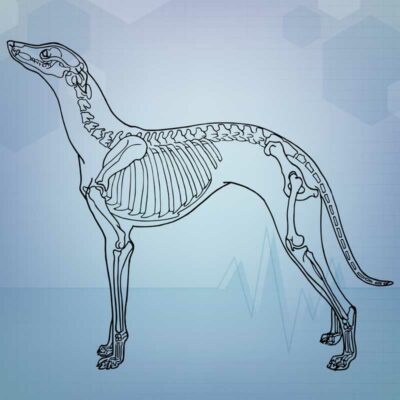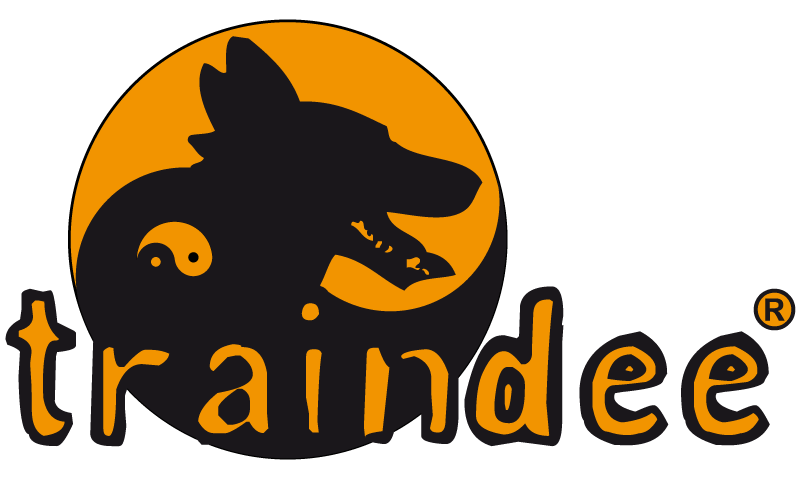 Skeletal – Bone disorders in dogs
Skeletal – Bone disorders in dogs
Ensuring optimal bone health, regardless of whether you move on two legs or four, is fundamental for unrestricted and efficient movement. Bones serve as vital pillars for the body’s support system.
For those who care for canine companions, safeguarding their health and mobility involves minimizing the likelihood of bone diseases. Causes of such conditions in dogs encompass inadequate nutrition, infections, tumors, and injuries. A comprehensive grasp of the indicators of bone diseases enables early detection and treatment, safeguarding your furry friend’s well-being, agility, and joy.
1. Hip Dysplasia in dogs
Hip Dysplasia refers to the atypical development or growth of the hip joint, often affecting both sides. This condition leads to varying levels of instability within the joint and the soft tissues surrounding it, causing deformation of the femur’s head and the acetabulum, and ultimately resulting in osteoarthritis.
The severity of dysplasia determines the nature of the disease, ranging from subluxation (where the femur partially dislocates, popping in and out of the socket, or experiencing incomplete separation of the joint) to complete luxation (where the femur remains entirely out of the socket). In elderly individuals grappling with chronic hip dysplasia, osteoarthritis can advance to a point where it severely limits mobility and functionality.
Which dog breeds are prone to hip dysplasia?
Hip Dysplasia stands as one of the most prevalent disorders affecting the canine hip, and it stands out as a primary contributor to arthritis in dogs. Typically, signs of this condition manifest in puppies between 5 to 8 months of age, although some dogs may remain asymptomatic until their adult or senior years.
Breeds commonly susceptible to Hip Dysplasia include:
The incidence of Hip Dysplasia has been reported to approach nearly 50% in St. Bernards that underwent evaluations for the condition.
It’s worth noting that small breed dogs are not exempt from this issue, with Pugs and Cocker Spaniels being among the most frequently affected.
Signs of hip dysplasia
Symptoms of hip dysplasia can vary widely and may encompass stiffness, reduced tolerance for exercise, challenges in rising or resting, difficulties with stairs, and abnormalities in gait such as limping on one or both rear legs. While dogs rarely display obvious signs of pain at home, those affected often exhibit significant discomfort when a veterinarian extends their hips during a clinical examination.
Treating hip dysplasia in dogs
A spectrum of treatment paths exists for managing hip dysplasia in dogs, spanning lifestyle adjustments to surgical interventions. When the condition isn’t severe or if surgery isn’t feasible due to medical or financial considerations, your vet might suggest a non-surgical route.
Depending on your dog’s situation, the following approaches might be recommended:
- Weight management to alleviate hip stress
- Limiting exercise, particularly on hard surfaces
- Utilizing physical therapy
- Incorporating joint supplements
- Administering anti-inflammatory medications like nonsteroidal anti-inflammatory drugs or corticosteroids
- Implementing joint fluid modifiers
For dogs suitable for surgery, more options become available. Among the array of surgical strategies, veterinarians commonly employ the following to address hip dysplasia:
- Double or triple pelvic osteotomy (DPO/TPO)
- Femoral head ostectomy (FHO)
- Total hip replacement (THR)
Prognosis for dogs dealing with hip dysplasia
Many dogs grappling with hip dysplasia can enjoy lengthy and fulfilling lives, particularly when provided with proper treatment.
If you suspect your dog might be impacted, it’s advisable to consult your veterinarian. They can offer insights into treatment possibilities and lifestyle adjustments that can help ensure your dog’s comfort well into their golden years.
2. Elbow Dysplasia in Dogs
Elbow dysplasia commonly impacts rapidly growing, large-breed puppies, though certain dogs may not show symptoms until adulthood. Predisposition varies among individuals. It refers to elbow joint arthritis, a prevalent cause of front leg lameness in dogs.
Which dog breeds are prone to Elbow dysplasia?
Dog breeds that have been observed to display a higher occurrence of elbow dysplasia include:
- Basset Hound
- Bernese Mountain Dog
- German Shepherd
- Great Dane
- Newfoundland
- Labrador Retriever
- Rottweiler
- Golden Retriever
Causes of Elbow Dysplasia in Dogs
Elbow dysplasia typically emerges in puppies aged between 5 and 18 months. It predominantly affects medium-to-large breeds and often has a hereditary link. Misgrowth in one or both elbow joints characterizes this condition. Dogs can develop elbow dysplasia in three elbow regions, with some experiencing issues in multiple areas.
These three abnormalities are:
- Ununited anconeal process (UAP)
This refers to a specific type of elbow dysplasia (ED) in which the processus anconaeus (the “articular process” formed by the ulnar bone) remains isolated and does not form a connection with the ulnar bone. The corresponding cartilage connection is not completely replaced by bone formation. - Fragmented coronoid process (FCP)
FCP affects the joint-forming surface of the ulna in the dog’s elbow.
The coronoid process gets its name from its position on the inside of the radius, where it bears the weight of the humerus. This delicate structure can suffer from various conditions, such as tears (fissures), fractures (fragmentation) or problems with the cartilage. - Osteochondritis of the elbow joint (OCD)
OCD refers to a disorder in the growth of cartilage and bone on the joint surface. It is caused by an impairment of the blood supply near the bone and cartilage structures in the joint area, which leads to the death of a demarcated area of cartilage. This becomes detached from its bony base and forms a loose layer of cartilage that is very sensitive to pressure. In principle, OCD can occur in almost any joint in the body, but the elbow is the most commonly affected joint alongside the shoulder.
Research suggests that genetic factors largely dictate which abnormalities a puppy might inherit. Puppies from the same lineage may commonly develop elbow dysplasia. Environmental factors, including diet, exercise levels, and the prenatal environment of the mother, can also influence the likelihood of elbow dysplasia in your dog.
Identifying Symptoms of Elbow Dysplasia in Dogs
The primary indicator of canine elbow dysplasia is a noticeable limp or lameness, often seen during a fast walk or slow trot, leading to a characteristic head bobbing. This lameness is typically less evident during running. Some affected dogs display reluctance towards long walks or extended play sessions. Additionally, dogs with elbow dysplasia experience restricted range of motion (ROM) in their elbow joints, encountering pain during both extension and flexion. This limited ROM can lead to discomfort and difficulty lying down in a sternal position.
Diagnosing Elbow Dysplasia in Dogs
Canine elbow dysplasia is diagnosed through a series of assessments including physical examination, X-rays (radiographs), computerized tomography (CT scan), and in some cases, arthroscopy. At CCOR, our surgeons can typically establish a fairly accurate diagnosis based on physical examination and basic X-rays, discussing subsequent steps accordingly. CT scanning becomes crucial for the definitive treatment plan. Arthroscopy serves both as a diagnostic tool and a means to treat elbow dysplasia.
Treatment of Elbow Dysplasia in Dogs
The approach to treating Elbow Dysplasia in dogs hinges upon the severity of the joint condition. Typically, general veterinary practitioners will refer cases to specialized veterinary orthopedic experts for corrective measures. Surgical interventions may involve:
- Extracting bone fragments or irritating cartilage from the joint
- Assisting in bone alignment
- Reattaching or removing a problematic bone within the elbow, causing joint irritation and degeneration
- In severe cases, joint replacement might be necessary
Additionally, veterinarians may prescribe nonsteroidal anti-inflammatory drugs (NSAIDs) to alleviate pain and inflammation in the elbow joint. However, prolonged use of NSAIDs is discouraged due to their potential association with cartilage damage.
If surgery isn’t recommended by your vet, there are alternative approaches to alleviate and manage your dog’s discomfort:
- Weight management: Maintaining a healthy weight is crucial as excess weight exacerbates symptoms. It eases pressure on their joints.
- Exercise: While enthusiasm might be low, regular, moderate walks (limiting running or jumping) are vital for your dog’s overall health and joint well-being.
- Medication: Your vet might prescribe anti-inflammatory medication to alleviate pain.
- Rest: Ensure your dog gets adequate rest, especially following exercise sessions.
- Physiotherapy and hydrotherapy: These low-impact exercises are beneficial for your dog’s joint health and provide a gentle form of exercise.
Managing elbow dysplasia in dogs requires lifelong care as arthritis is likely to develop. While some dogs respond positively to treatment, leading joyful and healthy lives, others may face a reduced lifespan due to persistent pain and challenging symptoms.


